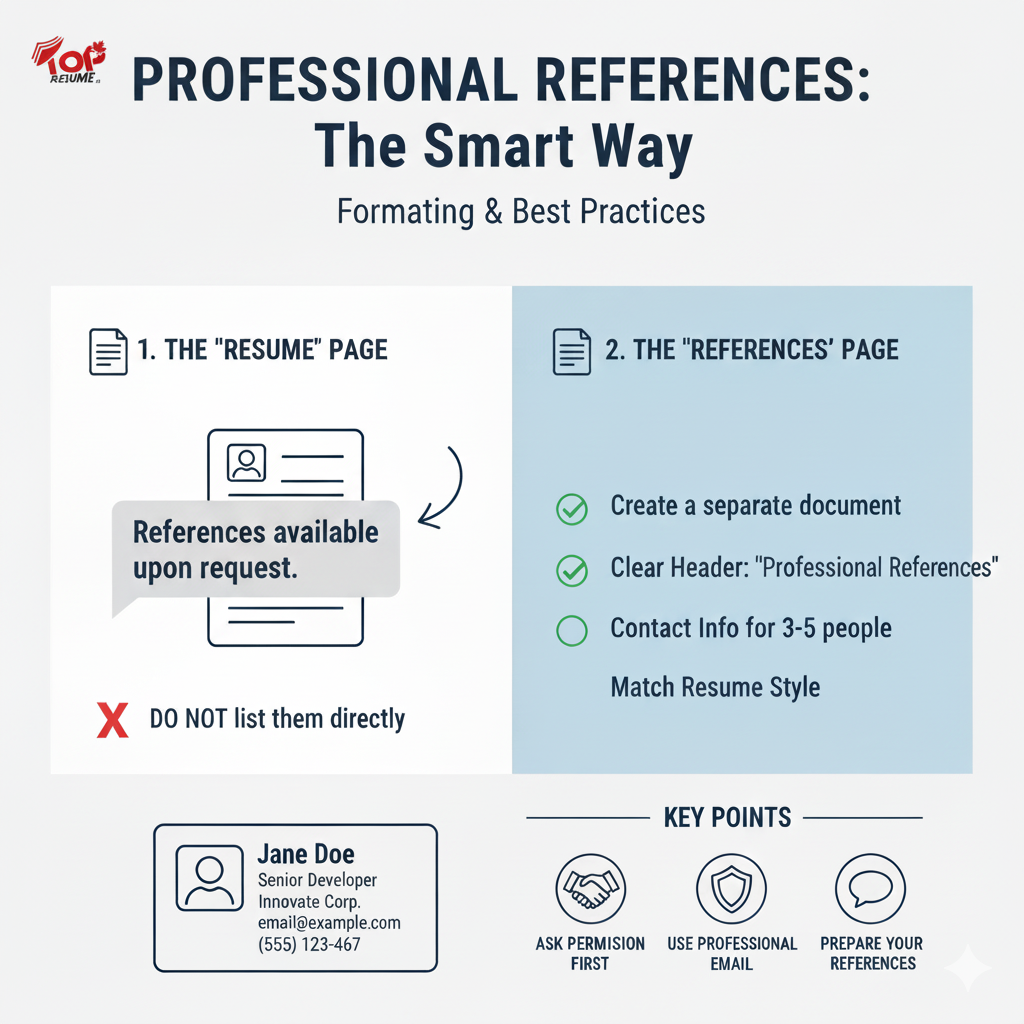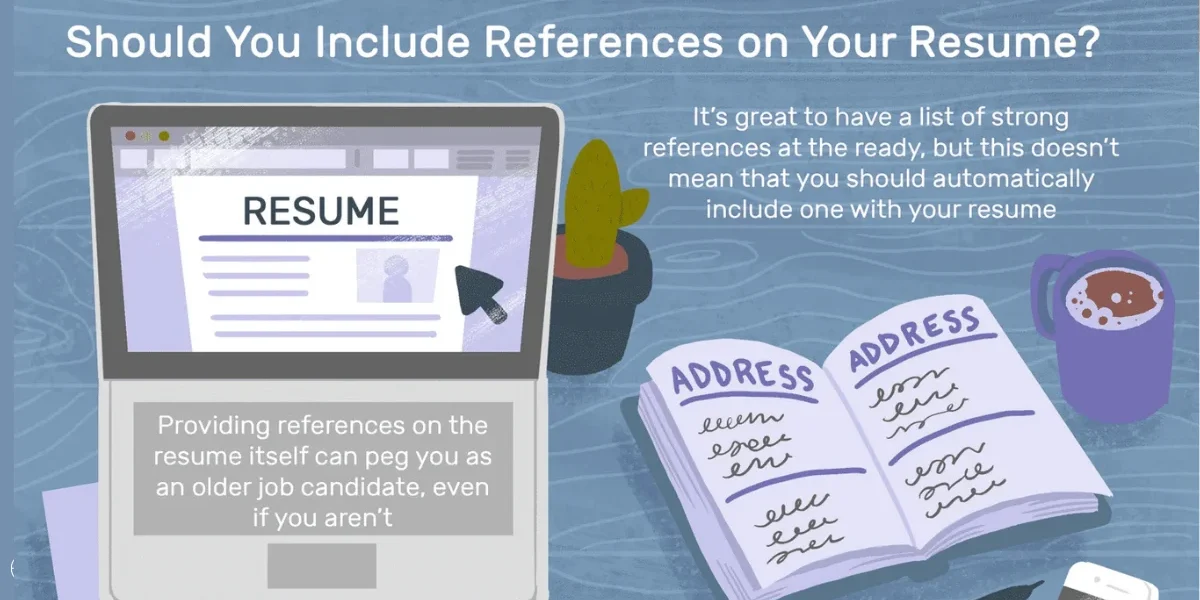A good CV reference is a game-changer. However, it is optional if you want to add them or not.
You will certainly list them only if it is requested or advantageous for your job application. When you add them to your resume, it shows your skills to the recruiters and employers. This helps them to see if you are a good fit for the position.
In this blog, we will attempt to find answers to the following questions: how to put references on a resume, whether to include a section on a resume, and if the answer is yes, how to do so effectively.
Do Employers Ask For References?
Surveys have shown that some employers request references, but this is typically not done during the initial stage of the recruitment process. Most of them will ask for the links only after they have interviewed you and are shortlisting you for the role. This step typically occurs at the end of the hiring process, before an offer is made.
This is the stage when they verify the claim you made in the resume, and the interview is actual. They might look for the ways you work with others or handle responsibilities. However, they might ask for references in the future, but this does not necessarily mean you need to include them in your resume. Unless specified in the job description, you can ask services like top resume Canada to help you add them; otherwise, you may leave it at the beginning.
Number of References to Add
When references are required, three is a good number. This will provide your employer with a balanced view of your abilities without flooding them with too much information. If you are a recent graduate and this is your first job application, two are enough. These individuals must be those who have supervised your work or were your professors during your academic journey.
If you have vast experience, you can add three to five depending on the role you are applying for. Quality is important than quantity. It is always better to have strong references. These individuals must be those who can speak confidently about your work, rather than listing five who know nothing about you.

The Look of the Reference List
After determining how to include references on a resume, the list must be clean, professional, and easy to read. You must highlight the name of the person, their job title, the company they work for, their email address, and any other relevant contact details. Additionally, don’t forget to mention the relation with the person. For instance, they may be your professor, colleague, or team lead.
You must obtain their permission before listing them. This is a way of showing respect and giving them enough time to prepare if contacted. Ensure that all added details are correct and up to date. A mistake in the contact details can create a problem and reflect poorly on your carelessness.
Reference Format in the Resume
For example, if you have been asked to include references directly or submit a separate reference page, the proper formatting is key. Ensure it is neat and straightforward. Label your list with the heading ‘References’ in bold and clean format. Add each of the references in this way:
Using this layout, your CV reference list will give a clean look and be easy to scan. Make sure that you are not using large fonts to fill in the space with some extra words. Your objective must be to make the details as easy as possible for the employer to contact your references.
The Placement of the References in the Resume
Placing the reference list on the resume is generally considered suboptimal; it is typically placed on a separate sheet of paper. Resume writers recommend keeping your resume focused and concise, leaving sufficient space to highlight your skills, achievements, and experiences effectively.
However, if you are asked to include the reference list, you must place it at the end, following the education and experience sections. However, read through the job application description carefully before taking any steps. If you are not asked for references, you can state ‘Available on demand’ or leave the section blank.
Should the Friends Be Added as a Reference?
The answer to this question will leave you astonished. If you are creating the list for the first time, it is generally better not to include any friends, especially those without work experience. Recruiters look for professional references, either those you have worked with or those who have taught you.
Your friend will say good things about you until they see you in a professional setting. This is one of the reasons their suggestion has no weight. If the same friend has worked with you in a team lead or business partner capacity, their reference will be considered valid. Ensure that you clearly explain the relationship between the two parties.
Choose the Best Person as a Job Application Reference
The best individuals are those who can talk about your working style, skills, and reliability. You can add your managers, coworkers, clients, or academic professors. But the most important thing is that that person knows you well and can speak positively about your contributions.
Select individuals who are approachable, articulate, and respond promptly to contact. Before listing them, take their permission. Explain to them the position you are applying for and the reason you think they are the best fit as your reference. This way, they will know what to say when contacted or emailed by the potential employer.
FAQs
What is the ideal number of references to add to the resume?
Quality is important than quantity. Ideally, you add three references.
Can friends be added as references?
You can use their name till they are employed or you have worked with them.
What is the format of listing the references?
You must include the name of the person, along with their job title, company, and contact details. Don’t forget to add the relationship with the person.
Do employers go through the reference list?
They review the reference list after interviewing the applicant.
The Final Comment
How to put references on a resume is often answered as not to include them, but references play a significant role in helping to land dream jobs; however, they are not part of the resume itself. Their placement is necessary, the numbers to list, and the correct formatting style.
Your focus should be on choosing the firm profiles that can support your application and present you in the best light. Avoid adding personal friends until they are your colleagues or are employed. When you add a name, ensure that you have spoken with the person beforehand. This will help them prepare to answer all the questions being addressed.

